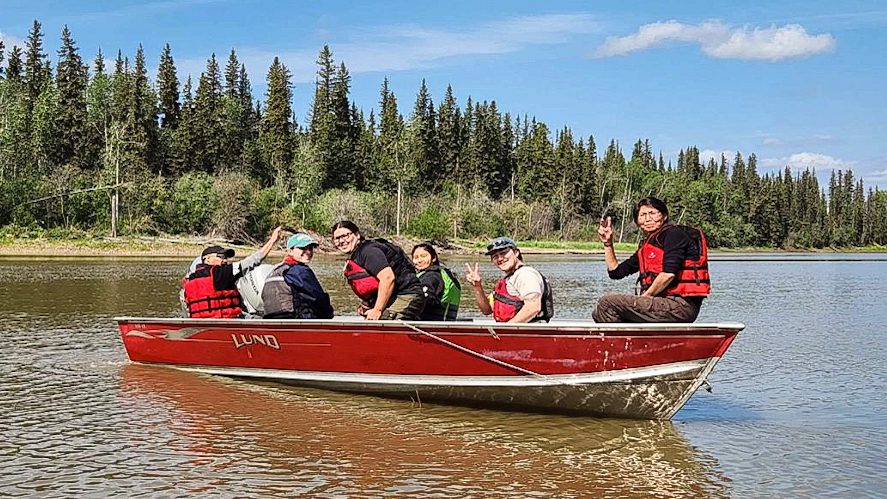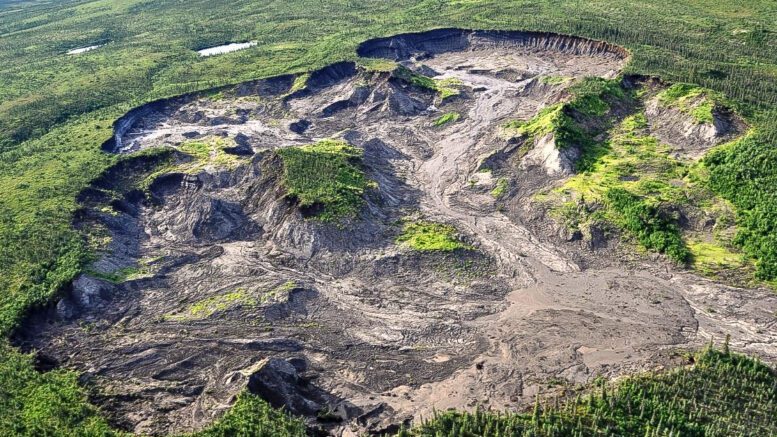The GNWT has released the Community-Based Water Quality Monitoring 10-Year Summary Report, showing over a decade of collaborative efforts to track and understand water quality across the territory.
Analysis of the 10-year dataset revealed increasing trends in sulphate, chloride, and dissolved lithium in the Slave River. However, these changes largely stem from natural geologic formations and seasonal fluctuations rather than industrial activity. Lower water levels can concentrate these dissolved ions, influencing measurements.
The report found “no evidence that human landscape disturbance or industrial activity is impacting water quality in the NWT portion of the Mackenzie River basin,” providing critical reassurance to communities and stakeholders.
Climate change emerges as a significant influence, particularly through permafrost thawing, says Department of Environment and Climate Change (ECC).
As permafrost melts, it releases sediments, metals, and nutrients into waterways, affecting water quality. The Peel Plateau area, including the Vittrekwa River, exhibits some of the highest turbidity and metal concentrations in the Mackenzie River watershed due to thaw slumps.
“Community monitors in Fort McPherson and surrounding areas had long observed changes in river conditions – more turbid water, shifting channels, and increased sedimentation. Data confirmed and quantified these observations,” ECC stated.
This confirmation is vital for environmental assessments and policy.
A joint initiative involving governments, Indigenous organizations, community members, and environmental experts, the program has built a robust dataset covering more than 90 water quality parameters at over 60 sites in 21 communities, according to ECC.
This long-term data helps communities identify trends, guide water stewardship, and inform policymakers.
“Water quality monitoring is a key activity that involves many hands from many communities. I applaud the dedication from so many people from the communities, caring about one of NWT’s most precious and vast resources,” stated Minister of ECC Jay Macdonald in the report.
One of the program’s biggest accomplishments is building a strong network of community monitors, technicians, and scientists working together. Local knowledge and community priorities truly shape the program’s success, ECC said.
Community members are integral to the program. They identify priority monitoring sites, collect samples, and help interpret results in ways that resonate locally. Indigenous knowledge and values guide monitoring questions, enhancing the program’s relevance and impact, ECC said.

NWT Community-Based Water Quality Monitoring (CBM) monitors and GNWT staff in Kakisa. On the boat in 2023 are Melaine, George, and Sadie Simba, Jayden Grandjambe, Laura Krutko, and Sarah Chapman. (GNWT photo)
ECC said they conduct annual training and provide technical help throughout the season.
“Building confidence comes from both skill-building and having a responsive support system in place when issues arise.”
Looking ahead, GNWT prioritizes strengthening partnerships, expanding youth involvement, and integrating Indigenous knowledge with Western science to adapt to emerging environmental challenges.
“Engaging youth and new community members is very important for the long-term sustainability of water stewardship in the Northwest Territories.”
Through summer camps and grants, young people learn water science, build skills, and connect deeply to their environment, ECC said.





